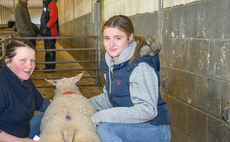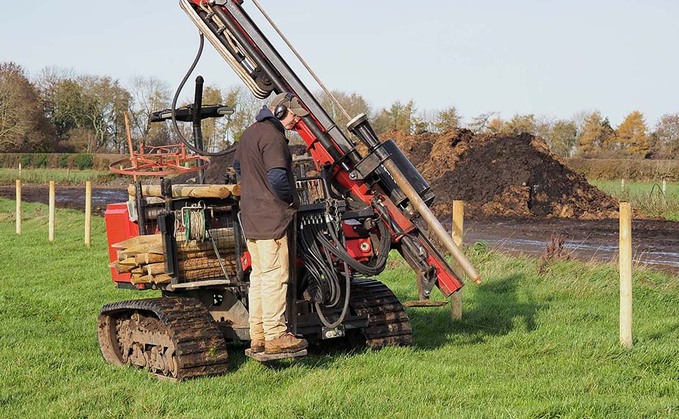
Fencing has expanded to be about more than just keeping stock in their designated field, as Jane Carley discovers on meeting with an ambitious young contractor.
A major goal for contractors is keeping their business sustainable and avoiding the trap of having to compete with others, cutting prices and lowering standards.
As such, Oxfordshire-based fencing specialist JC Countryside Services is seeking to do this by diversifying the range of products and applications offered while working in a streamlined way.
Managing director James Corbett says: "Our biggest day-to-day challenges are marketing the concept of keeping fencing up-to-date and stock-proof, along with finding good labour."
After gaining tree work qualifications and spending time driving combines in Australia, Mr Corbett returned home to set up his fencing business, working alongside his father, who had recently left farming, and his brother.
"We have a couple of part-time staff, but the aim is to make each job as much of a one-man operation as possible, so I have invested in self-propelled tracked post drivers, starting with a second-hand machine and now run two Protech Evo 1 units," he says.
"It is more cost-effective than using a tractor- or telehandler-mounted unit and there is less strain on the operator than when having to get in and out of a cab all day."
He points out that the average job is 400 metres, compared to 4,000m in New Zealand where he recently took a ‘busman's holiday' to study techniques, so travel is an important consideration.
"We can tow the post drivers behind a pick-up but cannot carry any materials at the same time, so need the supplier to deliver to site, the customer often helping with unloading. I have purchased a second-hand Unimog to increase flexibility and this also has a wire unroller on the front linkage."
The two Protechs are basic units with hydraulic swing round for tricky sites, says Mr Corbett.
"Their main function is to carry posts and put them in, which they do well. Stability and build quality are the most important characteristics. Some contractors prefer a heavier weighted machine, but we need to be able to tow them behind the trucks."
Work is usually organised into two gangs, although the two machines can work together for extra productivity on a big job. Other fencing contractors will also step in to help out at busy periods.
Rock spikes are often needed for the varied soils in a working area which extends into Warwickshire and the Cotswolds. Augers and rock drills are on the future shopping list.
The first lockdown in 2020 led to a struggle with getting materials from some agricultural trade suppliers who had been affected by the outbreak, while domestic fencing materials were also hard to source as suppliers closed.
"We shut down for a couple of weeks and then regrouped. We do not travel together and most of the work is naturally socially distanced and outdoors. All domestic contracts were postponed until the restrictions were eased."
However, availability of materials continue to cause food for thought.
"There is a perception among farmers that fencing timbers will not last and thus they can be reluctant to invest," says Mr Corbett.
"It is true that preservative techniques have changed over the years and contractors would like to have a voice in the timber processing industry to improve standards. A group of 20 of us have formed an agricultural committee on the Association of Fencing Industries with a view to studying wood preservation and hopefully encouraging suppliers to get it right."
Customers are offered premium or cheaper wire for stock fencing, but it is all high tensile and there have been improvements with the introduction of HT8/80/22 mesh which has larger gaps to reduce the risk of sheep getting their heads stuck.
"Some farmers still insist that they want HT8/80/15, so we have to try and educate those with a more traditional mentality," he adds.
A new opportunity is presented by otter fencing, popular with fisheries where otters can quickly wipe stocks out. Fencing is 500mm taller than a standard farm fence, as these animals can climb.
"It is an expensive product but makes sense for syndicate lakes. There is also interest in fencing to protect land from beavers which are being re-introduced in some areas."
Badger fencing is also increasingly in demand, to protect pedigree show cattle from the risk of TB, for example.
This stock netting has small squares and a skirt, either pegged down or buried to prevent badgers digging underneath it.
"Electrifying fencing is personal preference but reduces the tendency of stock to lean on the fence and graze the other side, so makes it last longer."
Mr Corbett's partner has equestrian interests, which brings business for horse paddock fencing, but he say there is also a reluctance to spend money in this market. A service which has proved popular with equestrian customers is the use of a planning app to divide land into paddocks. It quantifies how much acreage is in each and the meterage of fencing materials required.
"The app is accurate to 10m and provides the customer with a record of what has been used for when the fencing needs renewing or when they want a paddock's layout altered - it is more professional than drawing it out on a piece of paper."
Fencing is more or less a year-round business, Mr Corbett adds, although the ground can be too hard to get on in summer and the depths of winter can affect site access.
"Forecasting work can be tricky as few customers plan fencing schemes more than two or three months in advance - grant application windows help a little," says Mr Corbett. "We try to work with customers to encourage them to renew a small amount or plan a particular fencing scheme each year, rather than ending up with a large, expensive job all at once."
The purchase of a loader is an option for the future, to expand the work into hedge clearance and provide a more complete service.
"Overall, I want to be in this business for a long time," says Mr Corbett.
"And I believe being diverse and flexible, as well as providing a good service with quality products, is the way to achieve that."
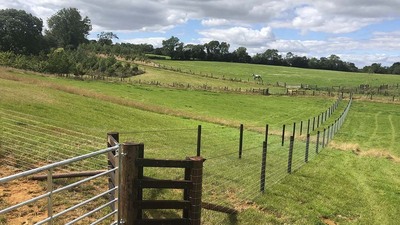
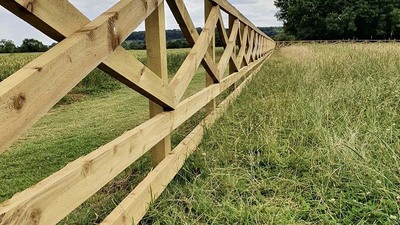
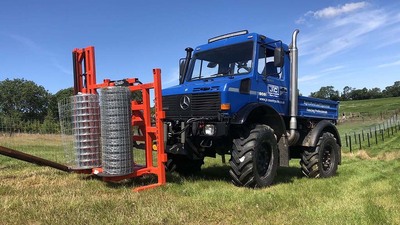
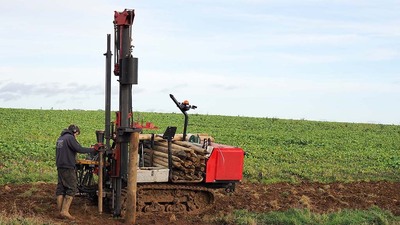
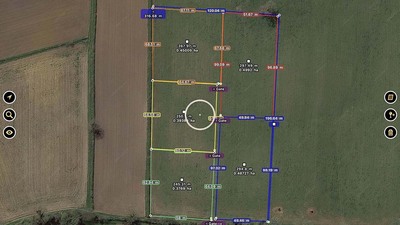

Post driver specifications
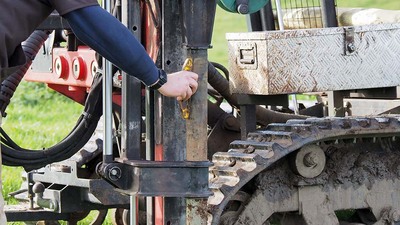
- Model: Protech EVO1 S (latest version)
- Engine: 48hp, Yanmar
- Drive: Two-speed tracking
- Weight: 2.95 tonnes
- Tracks: 320mm wide
- Hammer: 300kg
- Slew: 120 degrees
- Telescopic mast: 3.5m post clearance, two-way tilt
- Hydraulic rock spike diameter: 75mm
- Features: Hydraulic mast leg, large post carrying frame, front post carrying frame, wire unroller
- List price: £46,875




















